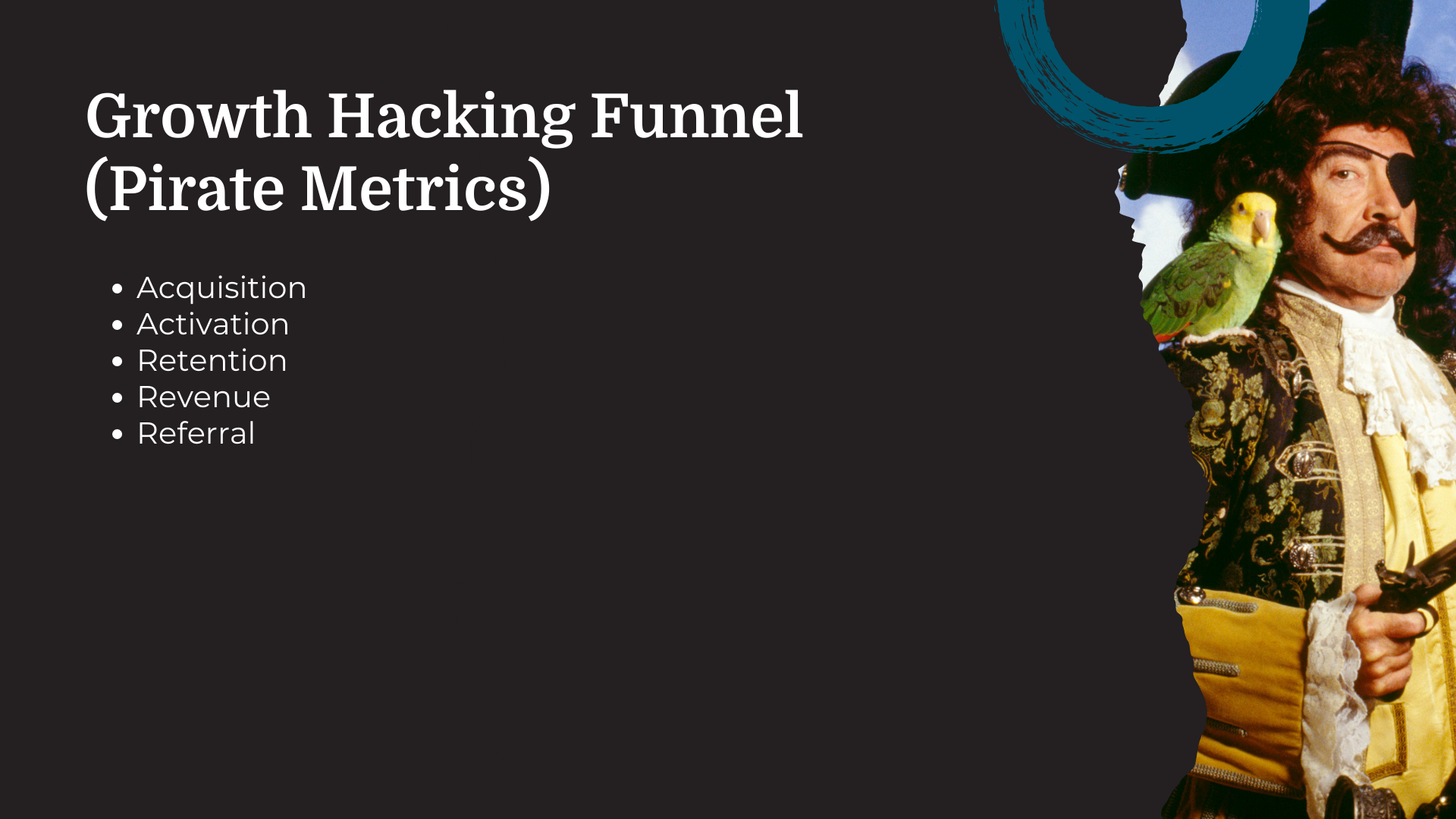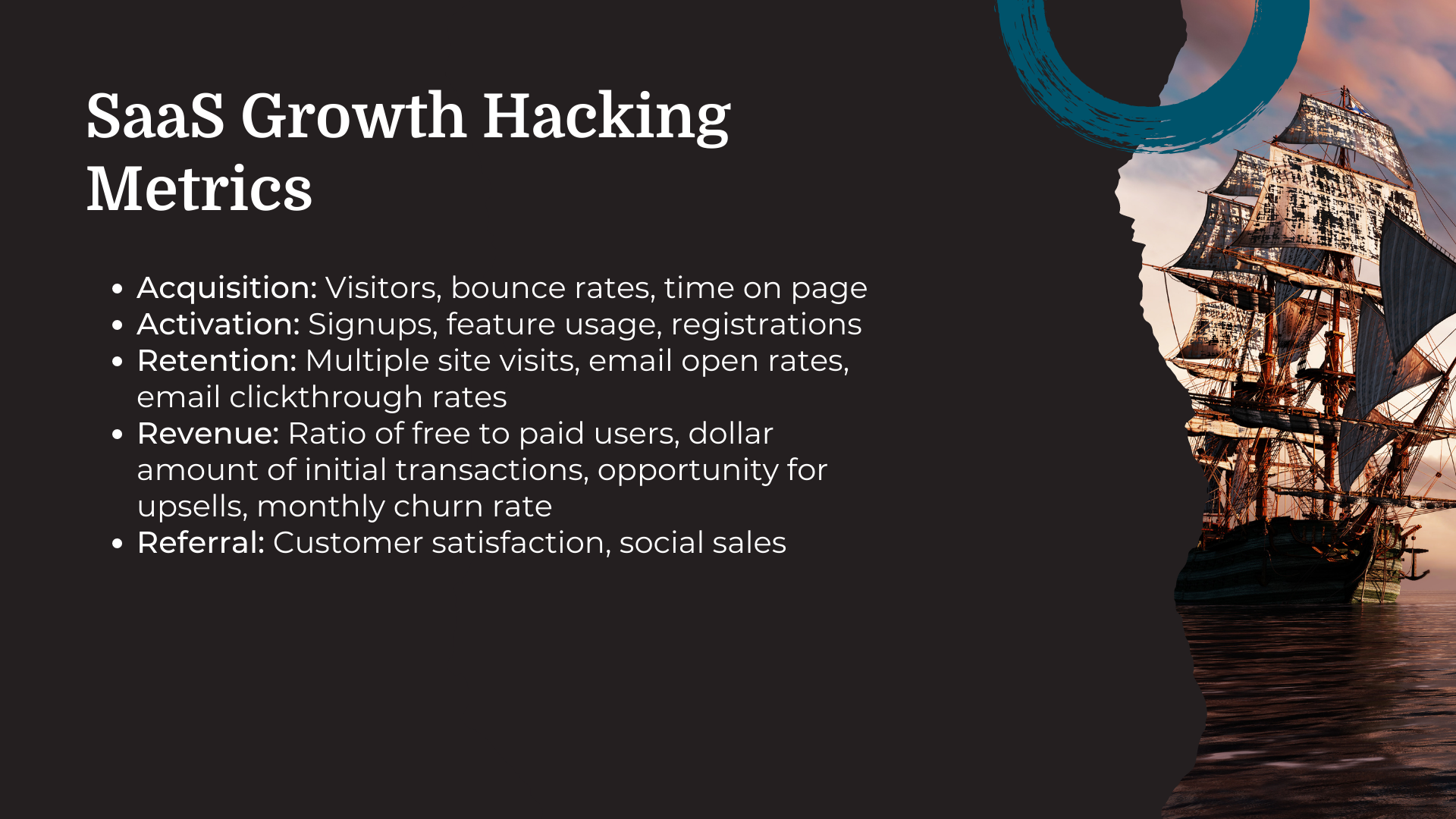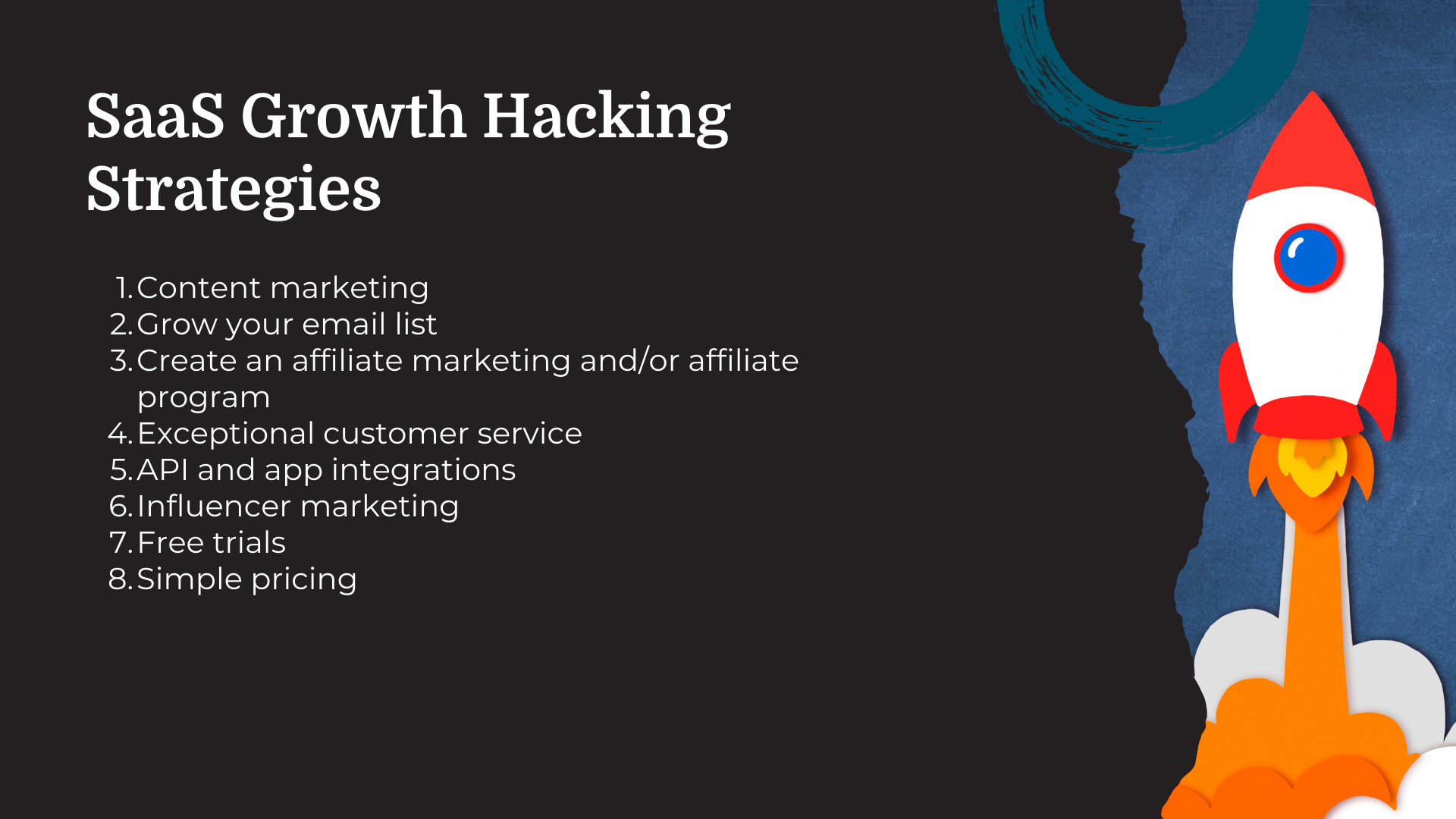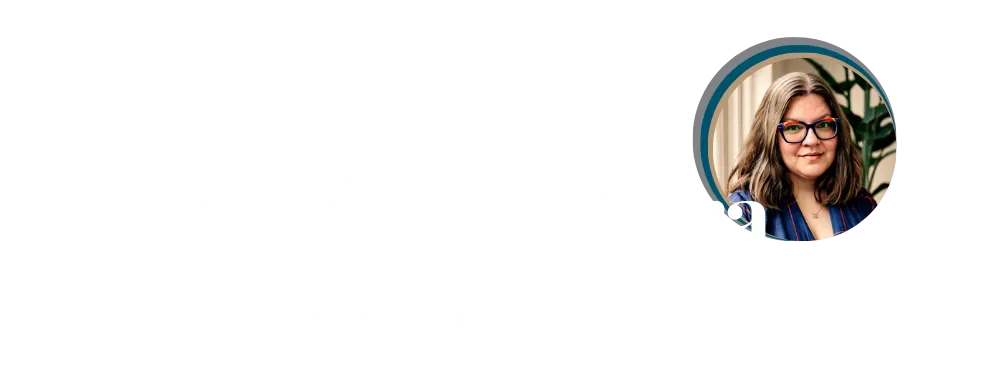


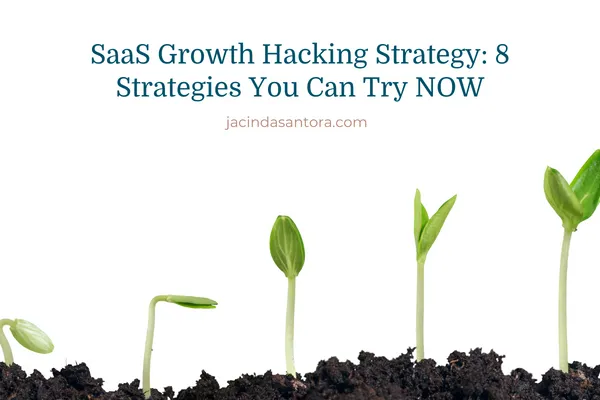
8 SaaS Growth Hacking Strategies to Try NOW
SaaS growth hacking strategy.
Did your eyes just water at the sheer number of buzzwords in that sentence?
If you’re not a marketer, growth hacking might sound like taking a machete to the Amazon.
Fortunately, it’s a pretty simple concept. Growth hacking is the process of establishing marketing strategies and tactics to grow and amplify your product as opposed to using slower-paced marketing strategies.
For SaaS businesses, that can mean more users, less churn, and a stronger bottom line.
That’s why I’ve compiled 8 SaaS growth hacking strategies you can use to level up your business. But first…
How Does Growth Hacking Work?
Growth hacking is unique to the businesses who use it, which is great because it’s entirely adaptable to your business needs. The purpose of growth hacking is to increase traffic and visitors, convert those visitors into users, and turn those users into loyal customers and brand evangelists.
Growth hackers typically use a funnel based on what’s known as “pirate metrics:”
Acquisition: Get your SaaS in front of the right people
Activation: Get the right people to try your product
Retention: Develop relationships with users to keep them on board
Revenue: Increase revenue through less churn and happy customers
Referral: Build a sustainable revenue stream from repeat customers and referrals
Pirate metrics. AARRR. Get it?
SaaS Growth Hacking Metrics
So, now that you know what the funnel looks like, what metrics are important for each stage?
Acquisition: Visitors, bounce rates, time on page
Activation: Signups, feature usage, registrations
Retention: Multiple site visits, email open rates, email click-through rates
Revenue: Ratio of free-to-paid users, dollar amount of initial transactions, opportunity for upsells, monthly churn rate
Referral: Customer satisfaction, social shares
8 SaaS Growth Hacking Strategies to Try
“That’s all very interesting, Jacinda,” you’re probably saying. “But how do I actually use it?”
Glad you asked.
Here are 8 SaaS growth hacking strategies you can put to use right away!
1. Content Marketing
Content marketing is an enormous driver of organic traffic. Plus, it’s a great way to inform, educate, and engage your target audience while building trust in your brand.
There’s a seemingly never-ending list of content types to create. My favorites for SaaS companies are:
Blogging
Blogging is hands down the easiest way to increase traffic to your site. It has the added benefit of establishing your position as a thought leader in your industry. Bonus!
Finding topics to write about is a lot easier than we try to make it out to be. Instead of trying to come up with ideas, do some keyword research to discover what your target audience is looking for when they search.
From there, you’ll want to take a look at what’s ranking for that keyword. This will tell you the format that will likely perform best (if the search brings up tons of “how-to” articles, your listicle might not be the best fit).
Next, you’ll want to consider the searcher’s intent. What problem are they really trying to solve with their search? There are several different ways to look at this. Moz, for example, breaks intent down into three different types (not all of which are great for standard blogs):
Informational intent: The searcher has identified a need and is looking for the best solution. This would be top-of-the-funnel (TOFU) content.
Commercial intent: The searcher has found a solution and is now exploring options. This is middle-of-the-funnel (MOFU) content.
Transactional intent: The searcher is ready to buy. This is bottom-of-the-funnel copy that's built to convert.
The last step is building out your content using the information you’ve discovered.
Podcasting
I love listening to podcasts. Granted, most of the podcasts I listen to are focused on true crime, but I do also listen to industry podcasts dealing with copywriting and marketing.
Build a podcast around what your target audience is interested in and you’ll have yourself an effective inbound marketing channel. Plus, you’ll be able to promote your product blatantly, without coming across as salesy. Because why wouldn’t your product sponsor your podcast?
Be sure to keep things interesting with different guests and topics!
Webinars
If you’re looking for highly qualified leads, webinars are where it’s at. The people who register and attend webinars are looking for EXACTLY what it is that you offer.
The trick with webinars is to give attendees great value while not giving them EVERYthing. You’ll lead them to the water, but you can’t drink FOR them, ya know?
Lead Magnets
Lead magnets are another excellent way to use content marketing to generate leads and provide value to your target audience. These should be quickly consumable items that have an impact on your users. So, free tools and resources do well as lead magnets, as do eBooks and checklists.
Lead magnets should offer up quick wins for your audience.
Repurposed Content
I’m also a big fan of repurposing content. That means, if you have a longform blog post, you can share it on multiple platforms and turn it into videos, infographics, social media posts, podcasts, and more. Since quality content takes time to create, you’ll want to be able to use your content in multiple places to get the most return on your investment.
Before you sit down and recreate the wheel, take some time to go through the content you’ve already created. Is there anything worth updating and repurposing? If so, you’ve got several content pieces ready to go!
2. Grow Your Email List
Email has a wild ROI. Depending on the studies you read, it’s anywhere from 3500% to 4400%. Like, what?
That means you have the potential to get back $35 to $44 dollars for every dollar you spend on email marketing.
Bottom line: it pays to grow your email list.
To grow your email list quickly, add opt-in forms to your website and create lead magnets to offer in exchange for email addresses. I use Funnel Gorgeous for just about everything now, but ActiveCampaign or ConvertKit are other good options, depending on how involved (ActiveCampaign) or simple (ConvertKit) you need.
3. Create an Affiliate and/or Referral Program
You’ve probably heard of affiliate marketing, but in case you haven’t, here’s a quick definition:
Affiliate marketing is when you pay someone a commission to sell your products.
Simple, yeah?
Affiliate marketing is also affordable, low risk, increases brand awareness, and builds customer loyalty—all great things for a SaaS business.
Here’s how to promote your own affiliate or referral program:
Create a landing page to promote the program to potential affiliates
Market your program to your current customers and subscribers
Promote your affiliate program on your website and social media
There are certain things you’ll want to hash out before launching your affiliate program, not the least of which is how much you’ll pay affiliates for sales. You don’t want to cut into your margins too much, but you still need to keep it attractive to potential affiliates. As with most things, it’s a balancing act.
There are affiliate networks that you can join to make managing your affiliate program a lot easier. Networks like ShareASale, Rakuten, and ClickBank can help you get your program up and running fast.
4. Exceptional Customer Service
Outstanding customer service is in fact a SaaS growth hacking strategy. When you provide stellar customer support throughout free trials and beyond, you’re sending the signal to your leads and customers that they matter to you. When they feel that, they’re more likely to continue on as customers and sing your praises to others in their networks.
To provide the best service possible:
Show off your human side. Your customers and leads want to know that they’re talking to real people who have an investment in them.
Provide options. You don’t have to be available everywhere (phone, email, text, live chat, social media, etc.), but you should be available in many of those places.
Share resources. You should have a knowledge base, documentation, forums, or other DIY resources for your customers so they can find answers to their questions without asking for support every time.
Follow up with people. Always, always be communicative. Even if it’s just to say “I still don’t know what the problem is, but I’m working with So-and-so on the product team to get it figured out for you!”
5. API and App Integrations
As a SaaS company, it’s expected that your tech game is on point. Offer up the ability to integrate with other SaaS platforms that your customers are already using to make your product even more enticing. At the very least, make sure that folks can use a tool like Zapier, IFTTT, LeadsBridge, or similar to sync up data and make their lives easier.
6. Influencer Marketing
Influencer marketing is when a brand collaborates with an influencer to market its products or services or improve brand awareness. It can be extremely beneficial to brands because influencers are, well, influential to those who follow them.
That means, by partnering with the right influencers, you can get a trusted person in the industry to put your brand, products, and services in front of the people who will care about them.
While it’s true that influencer marketing is huge for B2C products, SaaS companies and B2B brands can leverage this marketing channel, too.
7. Free Trials
People like free stuff. It makes us feel good. Unless it’s one of those strip club cards handed out on corners in Vegas. Nobody likes those.
So, what does that tell you about free trials?
Hopefully, it tells you that it has to be good.
Few things suck worse than being excited to try a product only to find out that the trial is an extremely watered-down version of the real thing and doesn’t even include the features you were interested in.
My advice is to offer free trials of your full product. And don’t require a credit card to sign up for it.
You can even set your trials up to revert to a limited “forever free” version of your product after the trial period is over. If your onboarding or nurturing email series is good enough (and your product is actually good), you’ll get that credit card number at the end of the trial.
And if not, you have the email address so you can market to them later when they might be more serious about buying.
8. Simple Pricing
Offer a simple, straightforward pricing model. I was recently checking out the pricing for a few different email marketing platforms for a client and there were a few that I didn’t even bother with because the pricing was so confusing.
If you can, and if it makes sense for your product, offer a free version and 2–3 premium versions of your product. If you offer a free trial or money-back guarantee, feature that information prominently on the pricing page.
Use SaaS Growth Hacking Strategies to Level Up Your Business
Welp, that’s all I got!
Remember, despite the connotation of the term “growth hacking,” it’s not easy. It requires effort and work, but with the SaaS growth hacking strategies I’ve shared here, you’re well on your way!
If this is a little bit beyond where you are with your SaaS business, no worries! Here’s how to create a SaaS marketing strategy quickly and easily.
Nothing in on this page or any other site or communication by or from me is a promise of earnings or guarantee of results.
